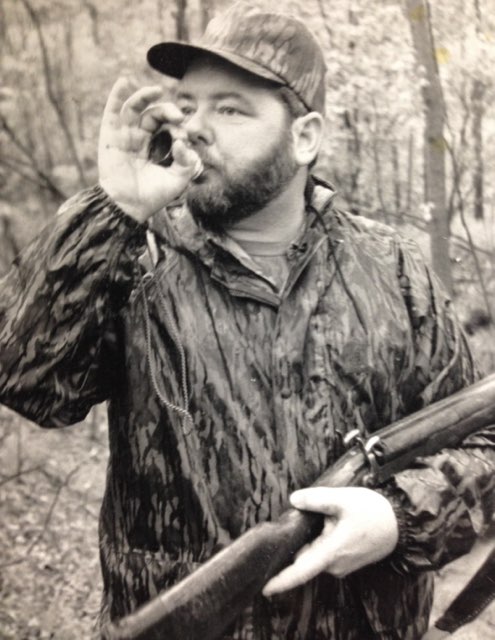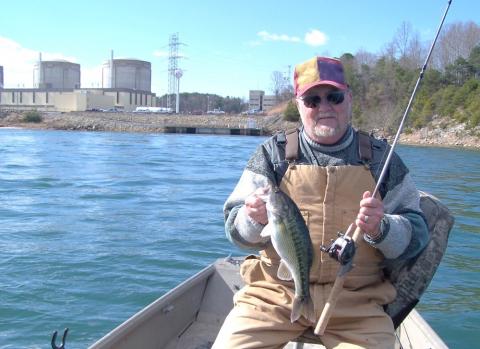AN ENGLISH LESSON IN CALLING TURKEYS WITH TUBE CALLS
By Butch Barnes

Continue reading beyond the title and you will discover how easy it is to mimic every sound hens and gobblers make by using a method called “phonics”. First, the definition of phonics: “Matching the sounds of spoken English with letters or groups of letters.” For the purposes of this article, we will alter this definition to read as follows: “Matching sounds that turkeys make with English letters or groups of letters.” In short, you are about to learn how to talk turkey. We will use the letters C, P, and T, as well as some combinations of letters and non-letter sounds. Reminder: all tube call turkey sounds are made by forcing air between the lip and the latex, and lips and latex must be moistened with the tongue. It’s how we originate and release the air (phonics) that creates the desired sounds.
Making a Cluck on a Tube Call
We begin with the “cluck,” which can be produced two ways. Using a hen call (baffled), hold the call with the latex to the top, press your bottom lip against the latex, and your top lip over the edge of the call. Pull your tongue back in your mouth to create more air space, shape your tongue against the back floor of your mouth as though to say the letter “P”, and thrust your tongue forward, forcing air between the bottom lip and the latex. Presto – a cluck! You will quickly see how easy it is to control the volume by changing the force of the air. This sound is best used in conjunction with early morning tree yelps. For louder yelps, we will use the letter “T”. With lips in the same position as above, press your tongue against the roof of your mouth as you would to say the letter “T”. Rapidly release a gentle (to begin with) burst of air as though you are saying “tuck”. The "K" at the end cuts off the sound in the throat, allowing you to repeat the call. The more air, the louder the cluck; just be sure you are not making a loud alarm putt.
Purring on a Tube Call
While using the tongue, we will move on to a “purr”. Still using the letter “T”, place the tip of your tongue against the roof of your mouth just behind your front teeth, as though to say “T”. Release air from the throat gently, causing the air to exit between the tongue and roof of your mouth – called “trilling” – creating the purr that turkeys make.
Yelping on a Tube Call
To make that all-important “yelp”, we will use the letter “C” - specifically, a hard “C”, as in saying ,”cook”. The “K” at the end serves to cut off the yelp and go right into the next one. Hold the call in the same position as the previous ones – latex to top. Prepare as if to say “cook”. Release and stop air from the throat in short bursts and behold – a series of yelps! Pressing the bottom slightly tighter against the latex raises the pitch higher. When you have mastered the cluck, purr, and yelp, it is easy to roll these three sounds into one continuous call: a few clucks followed immediately by purrs, followed by yelps.
Kee-Kee on a Tube Call
To make a jake’s kee-kee, prepare your tongue as though to say, “coo, kee, kee, kee, kee”, using more air volume than the yelp. After the initial “coo”, put more pressure on the latex with the top lip. These are generally used in a sequence of one “coo”, followed by three to five “kees”.
Gobbling on a Tube Call
We now move to the gobble/cutter tube with the open end. This call has a slightly larger internal diameter and length, producing a lower pitch. For the gobble, we will use the letter “T” as well as a sound of “Kuh”. Rotate the call, turning the latex to the bottom and using the top lip against the latex, and seal the call with the bottom lip on the base of the call. The gobble sound is somewhat similar to a mallard duck feeding call. Prepare by taking a deep breath, press the top lip against the latex, and blast out air as though to rapidly say, ”tookuh, tookuh, tookuh, tookuh." When you get this one perfected, it works great against dominate gobblers. He comes looking for a fight to protect his harem.
Cutting on a Tube Call
For a loud cut, hold the call the same as with the gobble, but using the letter “P”. Pressing the top lip firmly against latex, use strong, short bursts of air as though saying, “pot, pot, pot, pot, pot, pot… in a broken, staccato pattern.
In Summary
Before making and/or practicing these “Phonics” lessons, I strongly suggest that you listen to the recordings of real turkeys. I like to practice one sound at the time and perfect it before moving to another. Your diligence will be rewarded by many successful hunts and many good stories. And be of good cheer; bad decisions make for great stories, and that’s part of the learning process. Best wishes and happy hunting.
Read More: The History of Tube-Type Turkey Calls



























